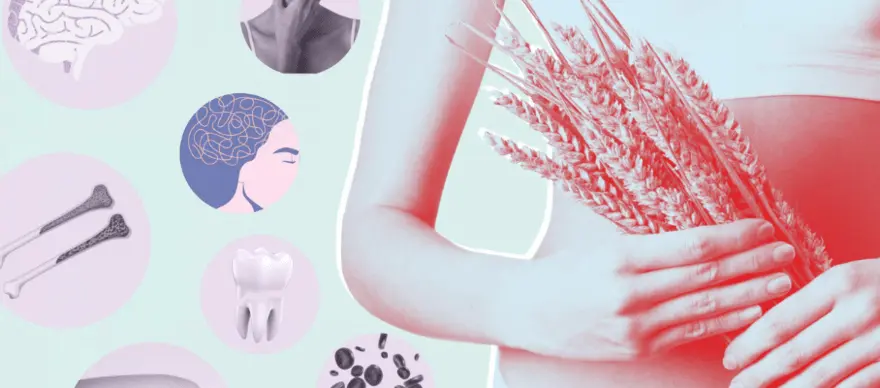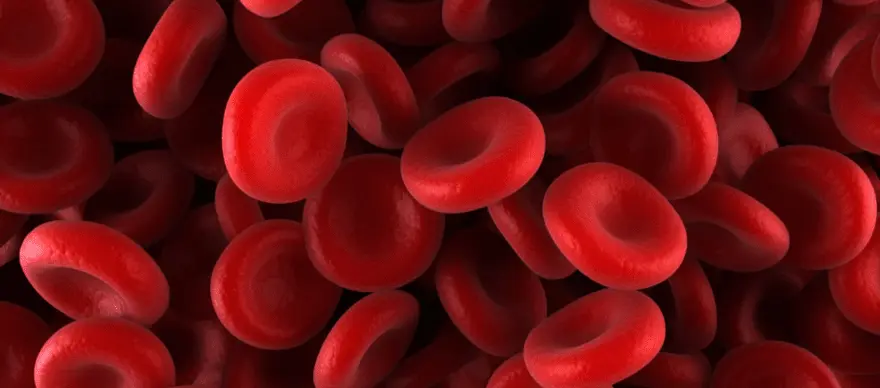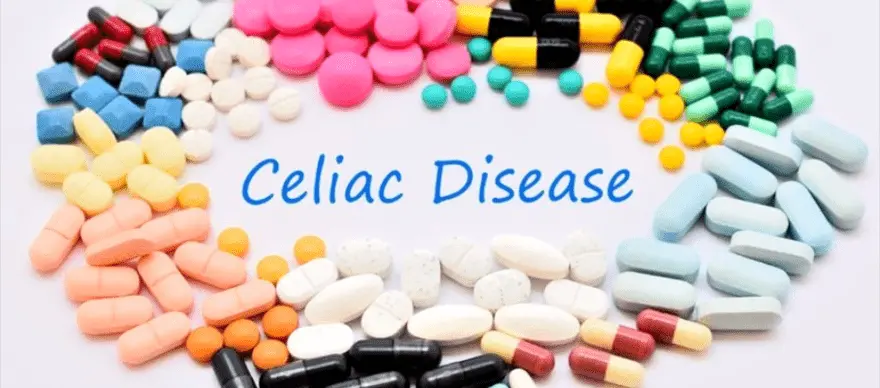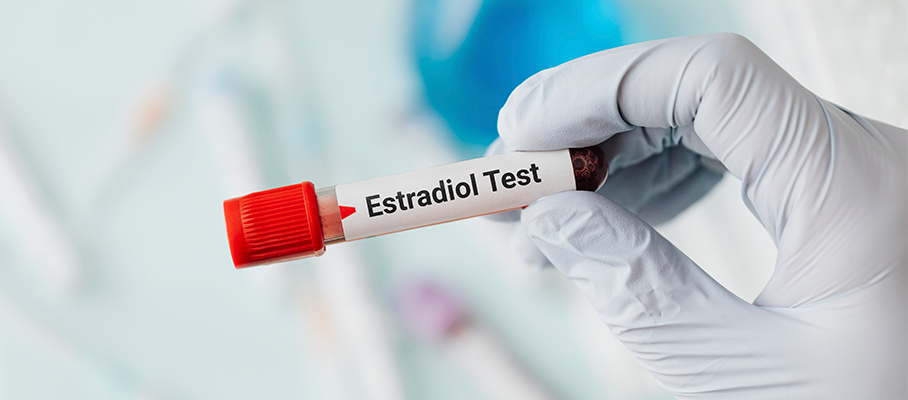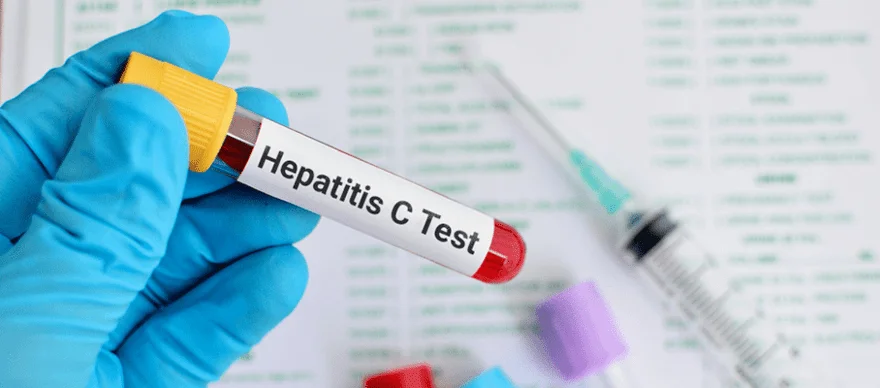Latest Blogs
What is Celiac Disease and Its Symptoms and Causes In Adults?
Celiac disease is a type of autoimmune disease in which gluten triggers the immune system response and damages the small intestine. One in every 100 people worldwide has celiac disease, and many are ignorant of their illness. According to estimates, up to 2.5 million people in the US may be living with celiac disease undetected. Symptoms are triggered when you ingest gluten, a type of protein. In order to relieve these symptoms, you can avoid gluten, and change your diet to a gluten-free diet. Eliminating gluten from one's diet is the only method to avoid experiencing its symptoms. The procedure of diagnosis, risk factors, and gluten-free diets are covered in further detail below, along with the symptoms of celiac disease. Celiac disease mainly harms the small intestine. There are two types of gluten sensitivity - Celiac disease: There are specific markers in the blood that help determine the diagnosis. Non-celiac disease: There are no specific markers; thus, the diagnosis requires symptoms. Symptoms of Celiac Disease The symptoms of celiac disease range from minor to severe. They may vary from person to person and evolve. Some individuals never exhibit symptoms or only do so later in life. It's possible that unless one develops anaemia or a nutritional shortage, they are unaware that they have celiac disease. Diarrhea Bloating Gas Abdominal pain Nausea and vomiting Constipation Fatigue Weight loss However, adults with celiac disease have signs and symptoms that are not related to the digestive system, including: Anemia, mostly due to iron deficiency Itchiness Dermatitis herpetiformis Ulcers in mouth Headaches Fatigue Numbness and tingling in the feet and hands, cognitive impairment, and problems with balance. Joint pain Loss of bone density (osteoporosis) or bone softening (osteomalacia) The functioning of the spleen is reduced Children having celiac disease have more digestive problems compared to adults, which include: Nausea Vomiting Constipation Gas Swollen belly Foul-smelling stools Chronic diarrhea One of the conditions in people with celiac disease is nutrient deficiency because the damage to the intestine will slowly restrict the absorption of nutrients leading to vitamin deficiency. Because of the same reason, a person may appear anemic due to iron deficiency. Causes of Celiac Disease The purpose of our immune system is to protect us from foreign invaders. If you have celiac disease, and you eat food containing gluten, your immune system attacks the lining of your gut. This causes inflammation in the intestines and damages the villi. The villi are the hair-like structures on the lining of the small intestine that help in the absorption of nutrients. When the villi get damaged, they cannot absorb nutrients, and no matter how much you eat, ultimately you will develop malnutrition. Risk factors of Celiac Disease The disease is common in Caucasians and people who have other diseases, including: A family history of celiac disease Type 1 diabetes Down syndrome Autoimmune thyroid disease Microscopic colitis Addison’s disease Rheumatoid arthritis Multiple Sclerosis Autoimmune hepatitis Turner syndrome Celiac Disease Complications It can be dangerous if you leave it untreated. Complications may include: Cancer, such as intestinal lymphoma and small bowel cancer Damaged tooth enamel Miscarriage and Infertility Malnutrition Lactose intolerance Neurological problems like seizure Pain and numbness in your hands and feet Pancreatic disease Weak bones Diagnosis of Celiac Disease Many people with celiac disease are not aware of their disease conditions. In order to diagnose, you have to get blood tests or endoscopy done. Serological tests can be used as a screening test to select patients for endoscopy and biopsy. Serology testing is done to determine the levels of antibodies in your blood. High levels of certain antibody proteins signify there is an immune reaction to gluten. It is crucial to perform the tests before having a gluten-free diet. If you remove gluten from your diet, the blood tests will apparently show normal results. Tests include antibodies against tTG, gliadin and endomysium. Your healthcare provider may recommend a few other tests to check for any nutritional deficiency, such as an iron deficiency test. Genetic testing is performed like HLA (human leukocyte antigens) testing (HLA-DQ2 and HLA-DQ8) that can be done to rule out celiac disease. If your results indicate that you have celiac disease, your doctor will mostly refer a few more tests like: Endoscopy. A long tube with a tiny camera is inserted into your mouth and passed down to your throat. The camera will allow the doctor to see your small intestine and will help to take a biopsy (small tissue) to view the damages of the villi. Celiac Disease Diet The symptoms of celiac disease are significantly reduced when one switches to a gluten-free diet. A person can see relief within a few days or weeks. In newborns, the small intestine heals typically in three to six months. Complete recovery might take several years for adults. Following a gluten-free diet has become simpler over time as gluten-free options are easily available. The body can effectively absorb nutrients from meals as the digestive system recovers. Foods to Avoid: Wheat, rye, and barley all naturally contain the protein gluten. Most grains, pasta, cereals, and processed meals all contain gluten. Gluten may also be present in alcoholic beverages manufactured from grains. Foods That Don't Contain Gluten: Meat and seafood Vegetables and fruits Grains such as buckwheat, amaranth, and rice. Pasta and cereals made from rice, corn, millet, sorghum, and Teff. Treatment of Celiac Disease Patients should avoid any food that has gluten in it, including wheat, barley, or rye. Your doctor will recommend you visit a dietician for a formal diet plan. Eliminating gluten from your diet will gradually decrease the inflammation of your gut, you will experience a change you will feel better and eventually heal. However, the complete healing of villi will take months to years. It often takes too long to heal in adults, like two to three years compared to six months in children. You will need regular follow-up and have to remain on this diet for the rest of your life. Even consuming a little quantity of gluten can have an adverse effect on your intestine and your symptoms will return. Even with celiac disease, you can still eat a healthy well-balanced diet. For example, bread and pasta are available made out of other types of flour (corn, soy, and rice). Gluten-free fresh fruits, vegetables, fish, and meats are also available in the market, you can consume them since it’s not been artificially processed. Medication like diamino diphenyl sulfone (Dapsone) helps relieve the symptoms of Dermatitis herpetiformis. Vitamin and mineral supplements can help people with celiac disease prevent or address deficits. Treatments that might lessen the pain of those with celiac disease and improve long-term recovery chances are still being investigated by researchers. The Celiac Disease Foundation provides further information on potential future therapies. How can I prevent Celiac Disease? Celiac disease cannot be cured. However, early detection and management of celiac disease like following a gluten-free diet may prevent the severity of the disease. Therefore, it is very crucial to get yourself checked if you are experiencing any symptoms of celiac disease. Especially if you have a high risk of having the condition. Conclusion Celiac disease is an autoimmune disorder that can cause numerous symptoms including, digestive difficulties, nervous system problems, weight loss, nutritional deficiencies, and fatigue. However, symptoms of celiac disease vary from person to person . If you have celiac disease, a gluten-free diet is vital for your health. A gluten-free diet will be a big change and challenge in your life. You have to follow gluten-free eating habits strictly that will help you to manage your condition, and eventually, it will reduce your symptoms. Speak to your doctor, if you are doubtful about having celiac disease and get yourself tested.
All You Need to Know About Myelodysplastic Syndrome
What is Myelodysplastic Syndrome? Myelodysplastic Syndrome, or MDS, is a serious and rare blood disorder. It is a type of cancer that affects the bone marrow and can cause a decrease or loss in the number of white blood cells. MDS is most often diagnosed in adults aged 25 to 50 but can also occur in younger adults and children. Some common treatments for MDS are chemotherapy and stem cell transplants. Alternative treatments for MDS are immunotherapy and bone marrow transplantation. Myelodysplastic Syndrome (MDS) Panel by FISH Test This FISH panel is made to identify the most prevalent and prognostically-important abnormalities in MDS. FISH studies are helpful supplements to complete chromosome studies, especially when monitoring an abnormal clone, determining relapse and progression, or when there is insufficient material for chromosomal analysis. Get your FISH test Done if you Experience Any Symptoms Like Fatigue Shortness of breath Easy bruising Frequent infections Thrombocytopenia Unusual paleness Anaemia Easy bleeding Pinpoint-sized red spots just beneath the skin Treatments for MDS The main goals of myelodysplastic syndrome treatment are to decrease the condition's progression, relieve symptoms, and avoid consequences. Myelodysplastic syndrome has no known cure, but some drugs may reduce the disease's progression. You might not need therapy right away if you are symptom-free. Instead, your doctor may advise routine checkups and lab testing to monitor your health and determine whether the disease is advancing. Here are Some Common Treatments for MDS: 1. Blood Transfusion Red blood cells and platelets in MDS patients can be replaced with healthy blood cells by blood transfusion. It can help manage symptoms. 2. Stem Cell Transplantation Depending on the source of the replacement blood stem cells, there are two forms of stem cell transplantation: allogeneic (ALLO) and autologous (AUTO). While AUTO uses the patient's stem cells, ALLO uses donated stem cells. In all cases, the objective is to use substantial doses of chemotherapy and radiation therapy to eradicate all unhealthy cells from the bone marrow, blood, and other regions of the body before allowing new blood stem cells to regenerate healthy bone marrow. For MDS patients, an ALLO transplant is advised frequently. 3. Medications Below are some types of drugs that can be used for the treatment of MDS: Drug with growth factors- These drugs are synthetic versions of elements that occur naturally in your bone marrow. Growth agents encouraging the bone marrow to produce more red blood cells may decrease your requirement for regular blood transfusions. Your risk of infection may be reduced by growth agents that encourage the formation of white blood cells. Medications to activate blood cell maturation- People not aided by drugs with growth factors and drugs encouraging blood cells to mature can lessen the need for frequent blood transfusions. Some of these medications may help alleviate the possibility of the illness developing into leukaemia. Drugs that resist the immunological system- Medications that suppress or regulate the immune system are used to lessen the need for red blood cell transfusions in some MDS patients. Medication for genetic anomaly- Your doctor may advise lenalidomide if the gene mutation isolated del(5q) is linked to your myelodysplastic syndrome (Revlimid). Drugs that eliminate infections- You will receive medications to manage infections if your condition worsens. Common drugs for the treatment of MDS: Hypomethylating drugs [Azacitidine (Vidaza), Decitabine (Dacogen)], Conventional drugs [Cytarabine (Cytosar-U), Daunorubicin (Cerubidine), Idarubicin (Idamycin)], Immunomodulatory drugs (IMiD) [Lenalidomide (Revlimid)]. Alternative Treatments for MDS 1. Immunotherapy Biologic therapy, also known as immunotherapy, is intended to strengthen the body's inherent defences against MDS. It uses substances that can be produced by the body or in a lab to enhance, target, or restore immune system function. Although therapy is rarely used for MDS, some individuals may benefit from it. Antithymocyte globulin (ATGAM, Thymoglobulin), a kind of immunotherapy for MDS, is administered following chemotherapy. However, immunotherapy can cause complications in some cases. 2. Bone Marrow Transplantation The only treatment available today that can induce long-lasting remission is high-dose chemotherapy combined with a bone marrow/stem cell transplant. However, because transplantation carries a higher risk of side effects, it may not be suggested for older people or people with existing health issues. A transplant, however, might be an option for people between 50 and 75 after less intense therapy. Your doctor will discuss the risks of transplantation with you before recommending it. They will also consider your age and general health, the subtype of MDS, the outcomes of any prior treatments, and many other things. In a bone marrow transplant, unhealthy cell-containing bone marrow is replaced with highly specialised cells, known as hematopoietic stem cells, which lead to the development of healthy bone marrow. Blood-forming cells called hematopoietic stem cells can be present in the bone marrow and circulation. Since blood stem cells are often transplanted instead of actual bone marrow tissue, the technique is now more frequently referred to as a stem cell transplant than a bone marrow transplant. Conclusion Myelodysplastic syndrome (MDS) is a rare condition that leads to mild to moderate illness, often resulting in long-term health problems. It is a condition that results when the mycelium cells of the spinal cord and brain are destroyed. It can result from ischemic or chronic damage to the body, such as a stroke, tumour, or a combination of both.
Celiac Disease: Symptoms, Causes, Complications, Diagnosis & Treatment
Celiac disease is a digestive disease that damages the small intestine and alters the absorption of vitamins, minerals and other nutrients that food contains. Patients with celiac disease should not eat a protein called gluten, which is seen in cereals (wheat, oats, barley, rye). When they eat foods having gluten, their immune system reacts and harms the small intestine lining. Impaired food absorption leads to malnutrition, even if adequate intake is maintained, and this can cause a wide range of other symptoms, such as fatigue, weight loss, anaemia and bone pain. Celiac disease is a serious autoimmune disorder that affects children and adults alike. It occurs when your body's immune system attacks your own organs and tissues in response to gluten, a protein found in wheat, rye, and barley. This health guide will explore the symptoms, causes, and treatments of celiac disease. Symptoms of Celiac Disease? There is great variability in symptoms, and there are not always digestive symptoms. The symptoms presented by patients with celiac disease depend on the poor absorption of the nutrients contained in the diet. They may report any of the following symptoms (combined or isolated): Chronic diarrhoea: This is the most common symptom that may be mild or severe. Chronic diarrhoea leads to dehydration and can cause problems such as weight loss. Weight loss: This may be the first symptom in some patients which may go unnoticed. If you have celiac disease and are losing weight without trying, you should see your doctor. Unexplained anaemia: Anaemia may occur due to the poor absorption of nutrients like iron, folate or vitamin B12. People with celiac disease may also have a low level of white blood cells, which can lead to fatigue and recurrent infections. Recurring abdominal pain: Abdominal pain is a common symptom, especially in children. It is often associated with other digestive symptoms such as diarrhoea or constipation. One should see a doctor if the pain is severe or persistent. Gases: Gases are produced when food is not properly digested. Undigested food also ferments and produces acids that can cause pain and bloat in the stomach. Bone and joint pain: These symptoms are usually related to osteoporosis, a condition that weakens the bones and makes them more susceptible to fractures. Osteoporosis is caused by the poor absorption of calcium and vitamin D in people with celiac disease. Muscle cramps: Muscle cramps can be caused by the poor absorption of electrolytes such as potassium, magnesium and calcium. In this case, they are often associated with other symptoms such as fatigue or weakness. Fatigue: People with celiac disease often feel tired and fatigued. This may be due to poor nutrient absorption, anaemia or other conditions such as anxiety or depression. Growth retardation: This is more common in children with celiac disease. It is caused by poor nutrient absorption, which can lead to stunted growth. One should see a doctor if a child is not growing at the expected rate. Some individuals with celiac conditions do not report any symptoms because the untouched region of their intestine can absorb sufficient nutrients to prevent symptoms. However, even individuals without symptoms can have long-term damage to their intestines if they do not receive proper treatment in time. Causes of Celiac Disease? The cause of celiac intolerance is unknown, but it is probably due to: Genetic susceptibility to intolerance is often considered the leading cause of celiac disease. About 1 in 100 people are estimated to have genes predisposing them to the disease. Environmental agents, probably viral infections or other infections, are thought to trigger the disease in people with a genetic predisposition. Celiac disease is not contagious and cannot be passed from one person to another. Celiac disease is often associated with other autoimmune diseases also caused by genetic susceptibility, infections, or other environmental factors. The most common diseases are Type 1 diabetes, Hashimoto's thyroiditis and autoimmune hepatitis. Complications of Celiac Disease? Most of the complications of celiac disease are related to nutritional deficits secondary to impaired absorption of food: osteoporosis, short stature or growth retardation, congenital malformations in children of celiac mothers not treated during pregnancy, dizziness and seizures etc. Celiac disease is also linked to some bowel cancers (lymphoma, adenocarcinoma). How is Celiac Disease Diagnosed? Diagnosis of celiac disease can be difficult because the symptoms that this disease produces also appear in many other diseases. Patients with celiac disease have elevated levels of antibodies against gluten (anti-gliadin, anti-endomysial, anti-reticulin and anti-transglutaminase antibodies). If the levels of these antibodies in the blood are high, the way to confirm the disease is to study a biopsy of the small intestine's lining. The confirmation of the diagnosis today is based on the concurrence of clinical suspicion, serology and intestinal biopsy compatible with celiac disease. How is Celiac Disease Treated? The best treatment for celiac disease is to sidestep all foods containing gluten, even in small amounts. Many foods contain gluten, and this protein is also present in many additives in manufactured products. Even after adopting a gluten-free diet, recovery may not be immediate. The duodenal biopsies may take up to 2 years to be completely normal. At the beginning of the treatment, in addition to the gluten-free diet, dietary supplements of vitamins or minerals that detect deficiencies are usually associated with favouring a faster human body recovery. A small percentage of patients with celiac disease do not improve as expected with the gluten-free diet and require other associated pharmacological treatments. These patients are the most likely to develop complications of the disease. Conclusion Celiac disease is a chronic, inflammatory, autoimmune intestinal disorder caused by the ingestion of gluten in genetically susceptible individuals. The only effective treatment for celiac disease is a gluten-free diet, which requires a great deal of knowledge and commitment on the part of patients to maintain strict control of their diet throughout their lives. Celiac disease can lead to many nutritional deficiencies and other serious complications if not treated properly. Early diagnosis and treatment are essential to prevent these complications. If you think you may have celiac disease, consult your doctor to undergo the celiac disease tests needed to confirm the diagnosis and start treatment.
All About Testosterone in Women
Testosterone is mainly a male sex hormone that becomes highly active in males as they reach puberty and starts to dip after age 30. It plays a vital role in the development of the male reproductive organs, production of sperm, and the growth and maintenance of muscle mass, sperm count, and energy levels. It also regulates the sex drive in men. However, the ovaries of women and also the adrenal glands produce this hormone too, although in much lower amounts. The main female sex hormone is estrogen, responsible for the development of the female reproductive system, but it mixes with testosterone to support the overall well-being of a woman. Low Testosterone Level in Women The testosterone levels in a woman’s body keep changing throughout life. A small amount of this hormone can make a lot of difference in the quality of their life. Testosterone in the blood of a healthy adult woman ranges from 15 to 70 nanograms per deciliter (ng/dl). The levels of this hormone start to dip between the ages of 20 to 40. Unlike estrogen, which happens to dip abruptly during menopause, no sudden changes in the levels of testosterone can be noted during this phase. However, in some women, testosterone levels can fall below the normal limit post menopause, resulting in a decreased sex drive and other problems. Lower than normal levels of testosterone in the body of a woman can cause one or several of the following symptoms: Weak and brittle bones or osteoporosis Weaker muscles Fatigue Obesity Depression Disturbed sleep Reduced libido Fertility problems Irregularity in menstrual cycles Vaginal dryness There can be more symptoms related to low testosterone levels in women, and the research in this area is still in progress. This condition often remains undiagnosed in women and is mistaken for side effects of menopause. The levels of testosterone in the blood can be determined by means of a blood test. Causes of Low Testosterone Levels in Women The levels of testosterone don't remain the same in women even throughout the day. It naturally decreases as you age, and by the time you reach the stage of menopause, you are likely to have much less testosterone in your bloodstream as your ovaries are no longer producing hormones like before. There are a few major causes of low testosterone in women, such as: As a result of ageing and menopause, both of which are natural If there are problems in the ovaries, pituitary glands or the adrenal glands Due to the medication taken to combat the side effects of menopause Oral oestrogen therapy Treatment for Low Testosterone in Women The best approach to treating low levels of testosterone in women is yet to be fully understood by scientists. Hormone replacement therapy is suggested for men in case of severe imbalance. However, there is limited data on whether it is equally effective and safe for women or not. It might have many side effects, even severe ones. However, you can make some simple improvements to your lifestyle in order to achieve this goal. These changes include: Incorporating proper exercise and a healthy diet into your routine Including calcium-rich foods in your diet for bone health Getting enough sleep during the night Getting therapies for reducing stress Going for therapies to improve libido High Levels of Testosterone in Women Women with high testosterone levels may notice changes in their physical appearance as well as other health problems. There are many contributing factors to this condition. Higher levels of testosterone are usually found in women with: Polycystic Ovarian Syndrome: It is a condition found in women of childbearing age. It is characterised by numerous fluid-filled follicles on the ovary, which hampers its ability to release eggs regularly. To diagnose this condition various test profiles are available, for e.g., PCOS profile 1,2 & 3 which can be selected basis symptoms being experienced by the patient Hypothyroidism: There happens to be a connection between hypothyroidism and high testosterone levels. Hypothyroidism can cause the production of sex hormone-binding globulin or SHBG to decrease, resulting in an upswing in free or bioavailable testosterone levels. Congenital Adrenal Hyperplasia: It refers to a group of rare genetic disorders and involves the adrenal glands. It can result in the excessive production of testosterone hormone. Unhealthy lifestyle: Unhealthy lifestyle can cause major hormonal imbalances in the body, leading to a rise in testosterone levels. Symptoms Indicating High Testosterone in Women Some common symptoms of high testosterone in women are: Severe acne, which is also known as hormonal acne Excessive facial hair Balding or receding hairline Increase in the muscle mass Irregular periods Low sex drive Frequent mood swings Infertility Obesity Reduction in the breast size Treatments for High Testosterone As high levels of testosterone can have visible ramifications on your health and outlook, there are also treatments that one can opt for. It includes lifestyle changes and also medications. Some medications that are often used to control high testosterone are: Oral contraceptives Metformin Glucocorticosteroids Spironolactone Conclusion Balanced testosterone levels in women allow the body to function with better ease and support their reproductive health. The levels of testosterone in your bloodstream can be found with a testosterone profile test. You can consult your doctor or gynaecologist after a profile test in case of an anomaly and the course of treatment you should follow in order to correct it. Last but not least, a healthy and disciplined lifestyle is the best way to keep your hormone levels under control and ensure overall well-being.
Testosterone: Know Levels in Men and Testosterone Hormone in Female
Introduction You may have heard about testosterone in different contexts, but there’s much more to it than casual conversations. It is a sex hormone that plays a vital role in males and the health and well-being of a person. You may be surprised to know that women also need this hormone for multiple reasons. Let’s find out, in this article, what testosterone is and how it affects your health. What is Testosterone? Testosterone is a sex hormone primarily produced by the male testis and female ovaries, found in humans and animals. In men, it plays a crucial part in developing the reproductive organs during puberty. It also regulates muscle mass, red blood cell production in the male body, and fat distribution. In females, the ovaries and adrenal glands produce testosterone in much lesser amounts. It combines with the female sex hormone estrogen to assist the growth, maintenance, and repair of female reproductive tissues and bone mass. It also influences a woman’s energy levels, moods, and libido. How Testosterone Affects Male Health When a male child reaches adolescence, testosterone production in their bodies rises and continues till the age of 30, after which it starts to diminish. During this period, it significantly contributes to the development of the body. The testosterone levels in the body can also influence a man’s mood. The roles played by testosterone in men include: The development of male reproductive organs. The gradual voice change during adolescence. Growth of facial and pubic hairs. In later life, it might also lead to male pattern balding. The growth and strength of muscles and bones. Production of male reproductive gametes or sperms. Regulates libido. Sperm production. Lower Testosterone Levels in Men If testosterone levels are too low, it might affect the health adversely. You would notice some symptoms due to this, and your doctor might ask you to go for a test to check the testosterone levels in your bloodstream. The average testosterone levels in an adult male's bloodstream range from 249 to 836 nanograms per deciliter (ng/dL). If the testosterone levels are lower than the normal limits or close to the lower limit, then you would require to determine the leading cause behind it. Some causes can include the following. The pituitary gland malfunctions, which sends signals to the testicles to produce the hormone. Due to a chronic health condition, such as kidney disease, alcoholism, AIDS, or liver cirrhosis. Treatments like chemotherapy or radiation can also affect the levels of testosterone. Adult men with low levels of testosterone may experience the following symptoms: Declining sex drive. Low energy levels. Drastic weight gain. Depression. Sudden mood swings. Weak and thin bones. Lessening of hair on the body. Low self-confidence. However, adolescents experiencing symptoms of low testosterone levels could be a sign of delayed puberty. Some symptoms may include less facial or pubic hair, delayed voice breaking/changing, and underdeveloped reproductive parts. Higher Testosterone Levels in Men Higher levels of testosterone mean increased activity of the main functions regulated by it. However, if you wonder whether it means increased strength or higher sex drive, it doesn’t quite work that way. Although a high testosterone level in men may lead to more muscle mass, it has many side effects. When the levels of the male hormone in the body are abnormally high, it gives rise to the following symptoms, Lower sperm count. Damage in the heart muscle. Enlarged prostate. Insomnia. Increase in muscle mass. Frequent mood swings. Overgrowth of body hair. Acne. Stunted growth. One of the major causes of high testosterone levels can be attributed to Testosterone Replacement Therapy (TRT). It is a natural testosterone booster treatment to increase levels, usually suggested to those who experience deficient levels. This treatment is given only to people whose bodies do not produce adequate amounts, resulting in major developmental issues. You can adopt specific lifestyle changes to maintain a healthy testosterone hormone balance in case of minor fluctuations. Testosterone in Women It’s no surprise that women require testosterone for the proper functioning of their bodies. Women's ovaries and adrenal glands also produce testosterone in smaller quantities than men. A proper balance between the female sex hormone estrogen and testosterone is essential for a woman's physical and emotional well-being. Testosterone plays the following role in women, maintaining overall health. It makes bones strong and healthy. It improves the brain's cognitive functions. It regulates sex drive. It maintains and restores reproductive tissues. It supports menstrual health and fertility. It supports breast health. In a healthy adult female, testosterone levels remain between 15 and 70 nanograms per deciliter (ng/dL). If lower than the normal levels, the following symptoms can be noticed: Fertility issues. Lower sex drive. Changes in the breast tissues. Irregular menstrual cycles. Weaker bones. Whereas, if the levels are higher than normal, then you will notice the following signs: Severe acne. Abnormalities in blood sugar levels. Excess hair on the face and also other parts of the body. Polycystic ovarian syndrome or PCOS. Infertility. Obesity. Decreased menstruation. Conclusion Testosterone is an essential hormone, even if incorrectly blamed for all unpleasant, unrefined aggressive, macho, angsty behaviourism. The term commonly thrown in when describing ultra, aggressive dominating behaviour is yet not fully understood. Maintaining proper levels of testosterone in both men and women is crucial. Otherwise, it might lead to damage to both the mind and body. You can check the testosterone levels in your body through a testosterone profile test. However, remember that a single test report reflecting a high or low testosterone level may not indicate anything too severe. You will also have to consider the symptoms to be sure. Always consult a medical expert or doctor about mild to severe symptoms.
Estradiol Test: Importance, Normal Levels, and What Your Results Mean
Doctors leverage several tests to determine the underlying causes affecting fertility, puberty, menopause, and other concerns. The female hormone estradiol is one of the important types of estrogen. Estradiol test is a helpful test for women suffering from post-menopausal vaginal bleeding, infertility, or concerns about menstrual cycles. It measures the levels of estradiol in the blood. It also helps in studying the causes of night sweats and hot flashes. Women undergoing Hormonal Replacement Therapy (HRT) during menopause may need an estradiol test to assess the effect of HRT. Read ahead to understand what to expect from the estradiol test besides its uses and procedure. Importance of appropriate estrogens levels The hormone estrogen plays a vital role in maintaining a woman's health, from menarche to menopause. There are three types of estrogen hormones, each having a specific function during different stages of a woman's life. Estrone (E1): Occurring during the post-menopausal period Estradiol (E2): An important hormone supporting the development of reproductive organs, breasts, and outer genitals Estriol (E3): Has significance during the period of pregnancy Occasionally, a few problems arise because of abnormal estradiol levels, such as: Ovarian tumors Breast cancer Development of breasts in men (gynecomastia) Fluctuations in the levels of sex hormones or having an excess or inadequate amount of these hormones can significantly affect a woman's health. The hormonal imbalance may cause infertility, menstrual problems, post-vaginal bleeding, and menopausal symptoms. What is the estradiol test? Usually, doctors recommend estradiol test to study the development of an individual's sex characteristics. The test is helpful for both men and women because estradiol can affect the growth of both sexes. Detection of early or late puberty is an essential aim of the estradiol test. Monitoring hormone levels is crucial in transgenders undergoing feminization or women having problems with menopause who need hormone therapy. It is also necessary to monitor the effectiveness of infertility treatment in women. Estradiol is also released by the testes in men in small amounts, although the produced hormone level is lower than in women. In men, estradiol plays a significant role in the healthy functioning of the brain and sexual drive and the development of reproductive organs. Estradiol test for males helps doctors determine estradiol levels, as this helps prevent the early death of sperms. Sudden stopping of the menstrual cycle may signal early menopause. An estradiol test provides insights into the onset or progress of menopause. The production of estradiol reduces during and after the commencement of menopause. Doctors can determine whether a woman is about to enter menopause or is going through the same. The estradiol test is vital for examining the functioning of ovaries. Women experiencing the following symptoms may have problems in their ovaries: Rise in the frequency of urination Loss of weight Pain in the pelvic region Pain in the lower abdomen Sudden fullness during meals Bloating Estradiol test [E2 Estradiol Serum Test] is usually one of the several tests for diagnosing many conditions affecting a woman's health. Doctors use the test results to correlate with other tests and clinical examinations before reaching the final diagnosis. Estradiol test - what to expect The serum estradiol test involves collecting a small amount of blood by puncturing the vein. An expert lab technician will use a small needle to withdraw blood from the individual's arm or wrist. It is normal to experience a pricking sensation as the needle punctures the vein to draw blood. The amount of blood depends upon the number of lab tests a doctor requests besides the estradiol test. The technician will provide a cotton swab or bandage to help the site of the injection heal. It may take three to five business days to receive the test results. Checking estradiol levels at a particular time and day is vital because the levels fluctuate throughout the day and during the menstrual cycle. Discuss with the doctor if you are taking any particular medication as these can affect the hormone level and, thereby, the test results. These medicines may have to be temporarily stopped before the test. Some of the medicines that impact the levels of estradiol are: Antibiotics Steroids Contraceptive pills Hormones used in HRT Estradiol test normal range The normal range of estradiol tests can vary slightly depending on the laboratory. The range can also vary according to the individual's age and gender. The values of estradiol levels are in picograms per milliliter or pg/ml. Following are estradiol test normal range values: Men: between 10 and 50 pg/ml Women in the postmenopausal stage: between 0 and 30 pg/ml Women in the premenopausal stage: between 30 and 400 pg/ml Interpretation of estradiol test results The serum estradiol test results can indicate various abnormalities depending on the sex and age of the individual. Pregnancy can influence estradiol levels. The test results help assess the cause of an individual's symptoms. However, this test alone may not be adequate to conclude a diagnosis. Higher than normal levels of estradiol Higher estradiol levels may suggest: Development of breasts in males Overactive thyroid gland leading to hyperthyroidism Presence of ovarian tumors Tumors in testes Liver cirrhosis Lower than normal estradiol levels Lower values of serum estradiol test may signal: Presence of a single X chromosome in women (Turner's syndrome) Low body fat because of diminished production of estrogen Problem with the functioning of ovaries like in ovarian failure Infertility because of polycystic ovarian disorder Reduced hormone production by testes and ovaries in hypogonadism Conclusion Estradiol is a helpful hormone secreted by adrenal glands and ovaries. Estradiol plays a crucial role in maintaining several bodily functions and the development of sexual organs. The estradiol test [ Estradiol Serum Test] is a simple blood test to measure serum estradiol levels. Physicians recommend the test to determine levels of a particular estrogen in the blood.
HCV (Hepatitis C Virus) Symptoms Treatment & Causes
Several blood-borne infections can pass on from one individual to the other irrespective of the fact that person may not have any symptoms. This is because Hepatitis C Virus or HCV may not exhibit symptoms even at an acute stage. No wonder, then, that it is also often referred to as a silent epidemic. About Hepatitis C (HCV) Infection HCV infection is caused by Hepatitis C Virus (HCV), resulting in swelling and damage to the liver. Such is the silent nature of the disease that one in two individuals with HCV infection may not experience symptoms for decades after contracting HCV. Without HCV treatment, the chances of the spread more than double. HCV infection progresses through different stages. The period between HCV entering the body and the start of the Hepatitis C disease is called the incubation stage. The next stage lasts for about six months and is termed Acute infection. Few patients with acute Hepatitis C may get rid of the HCV infection without moving to the chronic stage. Over 85 percent of patients in the acute phase may enter the chronic stage, leading to severe conditions such as cirrhosis or liver cancer. Early diagnosis and medication are known to be effective in curing the infection. Hence, HCV screening is advisable for people at high risk How Can You Get an HCV infection? The Hepatitis C Virus enters your body through infected syringes and blood transfusion. Sharing personal items like toothbrushes, shaving razors, or nail clippers will make you more likely to contract the disease but this is rare. In addition, individuals with multiple sex partners can get HCV if they are not taking precautions like using condoms. An infected person's partner is equally at risk of being infected with the Hep C virus. What are the Hepatitis C (HCV) Symptoms? As mentioned earlier, you may not exhibit any HCV symptoms despite an active Hepatitis C infection. It may take two weeks to six months for the initial symptoms to surface. In certain cases, though, symptoms remain mysteriously absent even at the stage where the infection has turned chronic. It is only when HCV begins to damage the liver that you experience severe symptoms. An acute HCV infection comes with the following symptoms: Nausea and vomiting Pain in the abdomen Appetite loss Yellowing of skin, eyes, and urine Poop having clay colour Fever Weakness Symptoms of chronic HCV infection are more serious. Chronic HCV infection causes scarring of liver tissues and may lead to cancer. Why is HCV Screening Crucial? Chronic HCV infection can damage the liver and patients may end up with terminal illnesses like liver cirrhosis or cancer. HCV testing involves detection of HCV antibody Simple and quick test- HCV screening involves a simple blood test to determine if you have the infection. In addition, the physician may recommend a repeat test to rule out the probability of a chronic infection. High-risk individuals should consider a repeat HCV test even if the first test was negative as HCV antibody take some time to rise after exposure Confirmation through PCR If you have a positive HCV antibody test it is advisable to get a HCV PCR test done to confirm diagnosis.The PCR test involves the detection of RNA, a type of genetic material. A quantitative HCV RNA PCR test measures the viral load in patients who test positive for the anti-HCV screening test. It is also helpful in assessing the effectiveness of the antiviral treatment for HCV infection. Visit us for HCV RNA Detection Test.







